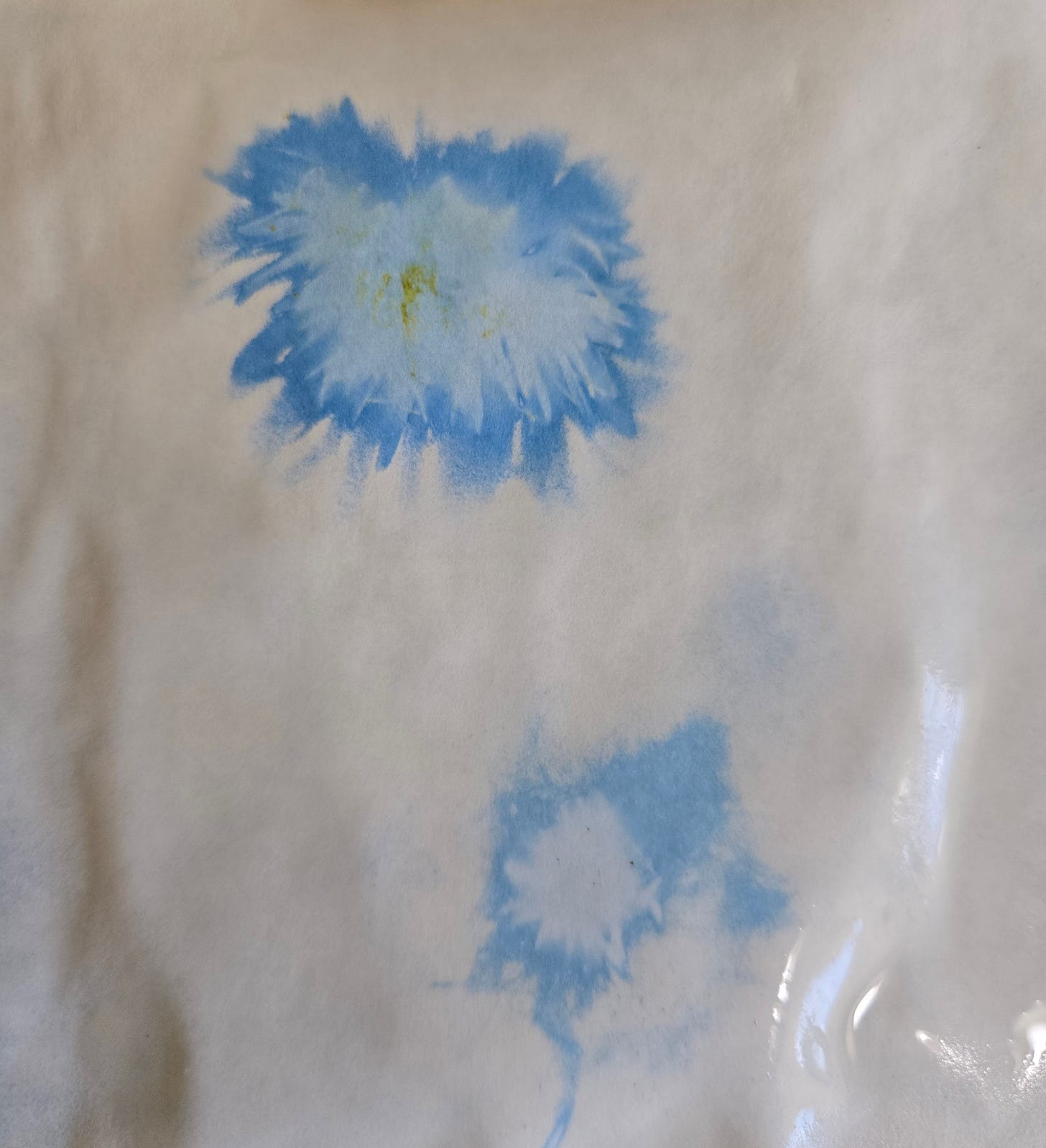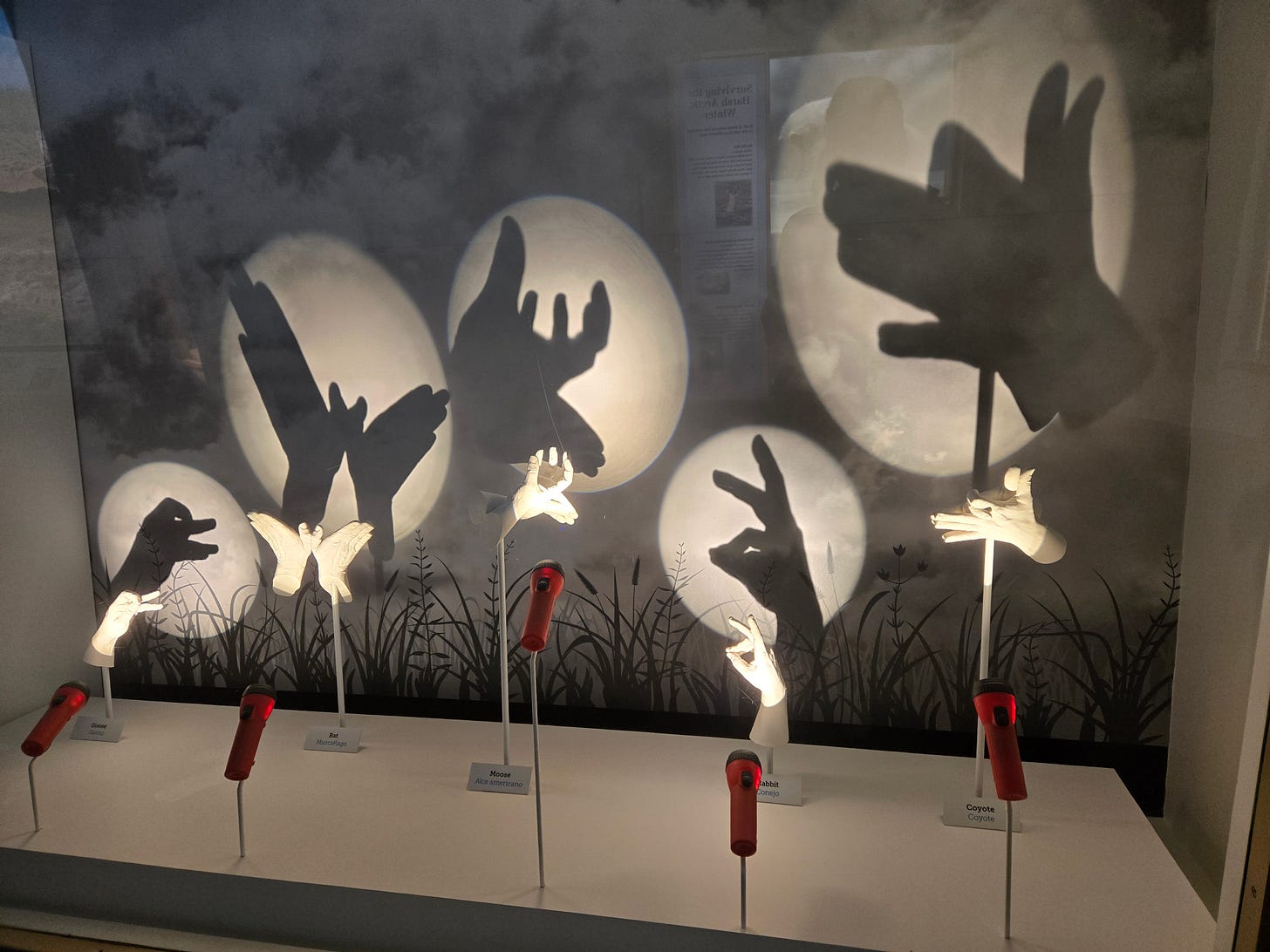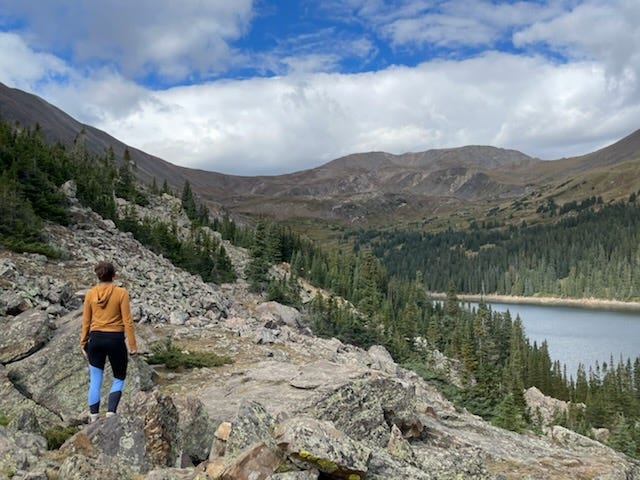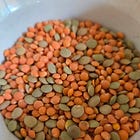On Saturday, I was out of the house for much of the day. When I finally got a chance to check my phone, I saw a photo of my dog, Rory, in the bathtub.
A few hours later Julio updated me that the vet said to keep an eye out for an upset stomach, but she should be fine.
I called him on my way home. “What did Rory do?!”
“She ate a bunny,” he said.
“A chocolate bunny!?” I asked, thinking of the little treats Abeula sent.
“No. Remember last night when we saw a rabbit run by the back door? I think it was being chased by something.”
I said the same thing the vet told him—this was gross, but probably fine.
It was not the first time my old Rory girl has heard this call of the wild. Not even the most grisly. Once, after a brutally cold night, I caught her in the yard gnawing on the fingers of a poor, frozen squirrel.
Reader, I am so proud that I did not crack any jokes about Rory eating the Easter bunny in front of my child.
I never thought much about predators when I was growing up in Indiana. They seemed mythical, like the Great Owl who allegedly prowled my neighborhood, snapping the tails off little dogs. Here I think about them often.
When we had Covid a couple of years ago, Julio slept on an inflatable mattress in another room, with the window cracked, in a futile effort not to catch the virus from me (sorry, dear). He said that, as he struggled to sleep, he heard wild noises carried over the late-summer breeze. Hooting owls and squeaking rodents. Yipping coyotes passing nearby. Somewhere out there, bats fly and mountain lions roam, too.
I enjoy illustrations of the patterns of light and darkness that cover the Earth as it rotates. When Julio travels for business, I track his flight. Watching his plane fly into a darkening sky on FlightAware, I can also see the night moving toward me. While I sleep, he will land in the morning on another continent. It is a good reminder that when it is dark here, it is light somewhere else.
The proximity of Easter and Earth Day has me thinking about the natural cycles of darkness and light and the metaphors we assign them.
Out in the backyard, I saw my daughter blow a dandelion puff into the breeze and I remembered seeing someone make a sunprint of different phases of a dandelion, representing the sun, the moon, and the stars. Our friend Megan sent us some sunprint papers, so I looked around for another puffball hoping we could try it.
We walked around “looking for a wish” over every inch of the yard. Julio was out on a walk, so I texted, asking him to bring a wish home if he could find one. No luck.
After dinner, we were back outside, the little girl riding her bike down the dirt path worn in the grass between the house and the barn. I got distracted by watching the sun sink behind the mountain until I saw her blow another wish into the breeze.
I was looking for a perfectly round, fluffy seed ball, but little girls are wise enough to know that the ones smooshed down into the grass work just as well.
I have an active imagination. I have seen a lot of horror movies. I am, therefore, a little bit afraid of the dark. My daughter loves the darkness. She loves flashlights, shadow puppets and things that glow. Sometimes when she wakes me up in the middle of the night, after putting her back to bed and turning toward my own, I am chilled by the open darkness between the door and the bed—the space where moonlight cannot reach. Like a little girl, I bound across the room into bed before a hand can reach out from under the bed to grab me by the ankles.
In the last few years, the ritual of putting the alpacas to bed each evening has pulled my curiousity toward nature at night. I am fascinated by the concept of darkness as a habitat. I wrote about that in Wild Roof Journal a couple of years ago.
I have been struggling with how to put this all together. Then, last night, trying to fall asleep, I blasted my eyes with blue light. I landed on Bill McKibbin’s latest, “Pope Francis and the Sun.”
Our little farm gets its name, Sol Homestead, partly from the Canticle of the Sun1 from which Pope Francis drew inspiration for his encyclical Laudato Si. We chose the Spanish word for sun because Julio wanted some homage to Puerto Rico, too. It all really came together when we had solar panels installed and when I planted hundreds of sunflowers and brought in bees.
The sun gets a lot of love. We tend to think of light as hope. As far as climate solutions go, solar power is a heavy hitter. We can get so much energy from the sun. And no one owns the sun. And it has risen every day so far. I too am thankful for Brother Sun.
But what about the night, the darkness? That is the territory of predators. The coyotes that yip. Great owls who snap dogs’ tails. Whatever killed the bunny that my dog so enjoyed.
At an event for an environmental group I volunteer with, I chatted with a woman who studies bats. At least she did before the research was defunded. I love bats and was excited to ask her some questions. One thing I learned from her is that in places where bat populations have died off, there is often documentation of increased illness. One theory is that the absence of bats to eat bugs all night leads to heavier use of pesticides by farmers in those areas.
If we put aside metaphors that give moral value to light over darkness, it becomes easier to see how things that happen in the darkness help sustain those that happen in the light. Seeds start in the darkness of the earth. For us creatures who are not nocturnal, rest happens in the darkness. Although we cannot monetize the darkness, the nocturnal side of the ecosystem is just as essential.
In the past few months, I have read and heard many references to how dark the times are. I also feel deeply worried about the future. I wish I could turn on a nightlight to see a glimmer that everything would be okay.
But I think doomerism is just as bad as apathy.
One of my favorite books is Hope in the Dark: Untold Histories, Wild Possibilities by Rebecca Solnit. I pull it out, along with Not Too Late whenever I start to feel weighed down by the state of things. She writes:
The future is dark, with a darkness as much of the womb as the grave.
Solnit’s thesis feels intuitive to me: we don’t know what is going to happen and that gives us room for hope. She uses historical examples to illustrate how often big social changes, moments of progress, seemingly come out of nowhere. The fuel of countless, common, unsung acts of hope bursting into light:
Hope locates itself in the premises that we don’t know what will happen and that in the spaciousness of uncertainty is room to act. When you recognize uncertainty, you recognize that you may be able to influence the outcomes–you alone or you in concert with a few dozen or several million others. Hope is an embrace of the unknown and knowable, an alternative to the certainty of both optimists and pessimists. Optimists think it will all be fine without our involvement; pessimists take the opposite position; both excuse themselves from acting. It’s the belief that what we do matters even though how and when it may matter, who and what it may impact, are not things we can know beforehand. We may not, in fact, know them afterward either, but they matter all the same, and history is full of people whose influence was most powerful after they were gone.
The dark can be scary because it is uncertain, but if we take her word for it, that uncertainty is full of possibility. And in that space of possibility, we need to keep doing the next right thing.
Then, I also came across this line from Pope Francis:
A single individual is enough for hope to exist, and that individual can be you.
And then there will be another 'you,' and another 'you,' and it turns into an 'us.'
And so, does hope begin when we have an 'us?' No. Hope began with one 'you.' When there is an 'us,' there begins a revolution.
Everything does feel so precarious lately. And yet, it is Spring. And yet, my daughter zips around on her bike, enjoying the one childhood she gets. And yet, I am witnessing a real emphasis on community surge online and in real life. And yet, maybe the darkness is full of possibility. I hope. I hope. I am going to keep trying to do the next right thing. And try to rest in the darkness as well. And to wish on dandelions and stars.
Even when it is dark here, it is light somewhere else.
Do Less for Earth Day
Inviting you to do less has become kind of a theme for me. But again, if you want to make a positive impact this Earth Day, you could start by doing less.
For example, you could not pull your dandelions. You could not spray pesticides or herbicides on your property. You could not buy Earth Day sales unless you really need something. You could drive less. Mow your lawn less. Shop less. Commit to eating less (or no!) animal protein. Do a waste audit of your home and find places where you could be more efficient, buy less overall, or stop using single-use packaging. Browse a museum online or in person instead of shopping for something you do not need.
Recently, Rooted Folk reminded me of the old saying: “Use it up, wear it out, make do, or do without.” I think keeping that wisdom in mind and planting some seeds or some trees makes for a glorious Earth Day. You could plant renegade forests like Cecilia at The Kitchens Garden if you’re feeling like doing something extra.
Find a community to protect and enjoy nature with. Pick up trash with a walking group. Restore hiking trails or plant trees. Advocate for green policies or get out environmental voters.
Do something you can commit to. Or commit to doing something less. The little things add up. And call your elected officials, too. Tell me your Earth Day plans, what gives you hope, and if you’re afraid of the dark in the comments, please.
And, if you need a boost of energy, bop around to “Dancing in the Dark.” That usually does it for me.
Environmental Stories from My Archive
Translated to English, the poem begins, “Be praised, my Lord, through all your creatures, especially through my lord Brother Sun, who brings the day; and you give light through him. And he is beautiful and radiant in all his splendor! Of you, Most High, he bears the likeness.
Be praised, my Lord, through Sister Moon and the stars; in the heavens you have made them, precious and beautiful.”










This is a great read as the change of season puts darkness on the run. Sunlit hours now well outnumber those between dusk and dawn. Thanks for the reminder on the source of hope and its home within us, Kasey
All this. Absolutely all this. Though having a farm will cure you of fear of the dark I bet! My dog eats bunnies on the regular. Sometimes he buries parts of them to eat later. 🤮 If I am fast enough he will bring me the body if commanded but usually I only see him in the distance. Scuttling out of ear shot! Bad dog.